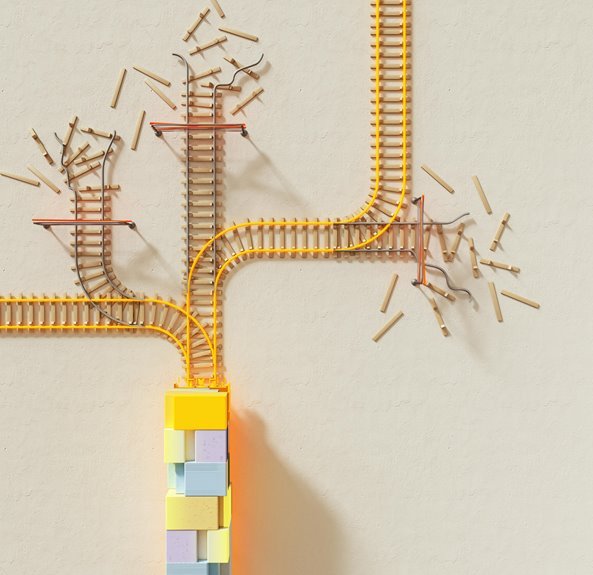Like a skilled detective sifting through clues, you need to identify and correct digital transmission errors to maintain data integrity. Error detection algorithms, such as checksums, play a pivotal role in this process, revealing discrepancies in transmitted data. However, the real challenge lies in implementing automated correction mechanisms that can resolve these issues in real-time. What techniques can you employ to enhance the reliability of your communication systems?
Understanding Digital Transmission Errors
When data is transmitted over digital networks, errors can occur due to various factors like noise, interference, or signal degradation.
You’ll encounter different error types, including bit errors and burst errors, primarily caused by transmission noise.
Understanding these errors is crucial for maintaining data integrity and ensuring reliable communication.
Key Error Detection Algorithms
To maintain data integrity in the presence of transmission errors, employing effective error detection algorithms is vital.
You should consider using checksum algorithms, which verify data accuracy by summing byte values, and parity bits, which add a simple binary digit to ensure even or odd counts.
These methods enhance reliability, allowing you to detect discrepancies efficiently and ensuring your data remains trustworthy during transmission.
Automated Correction Mechanisms
While error detection algorithms identify discrepancies in data, automated correction mechanisms take the next step by actively resolving these errors without human intervention.
By employing automated redundancy techniques, these systems enhance error resilience, ensuring data integrity.
You’ll find that such mechanisms can adaptively correct errors in real-time, significantly reducing downtime and maintaining operational efficiency in digital communications.
Real-World Applications of Error Detection and Correction
As digital communications expand across various sectors, the real-world applications of error detection and correction become increasingly vital.
In telecommunications, increasing transmission reliability directly reduces error rates, ensuring data integrity.
Similarly, in cloud computing, robust error correction mechanisms maintain seamless information flow, allowing for greater user freedom.
These technologies underpin critical infrastructures, making efficient communication possible in today’s interconnected world.
Conclusion
In the realm of digital communication, error detection and correction algorithms act like vigilant sentinels, ensuring data integrity amidst the chaos of transmission. Imagine a seamless symphony where each note—like 3665485239 or 2035144562—plays harmoniously, unmarred by discord. By employing sophisticated techniques, you can transform potential errors into clarity, reinforcing the reliability of interconnected systems. Ultimately, these mechanisms not only enhance communication but also fortify the backbone of modern technology, creating a resilient digital landscape you can trust.




